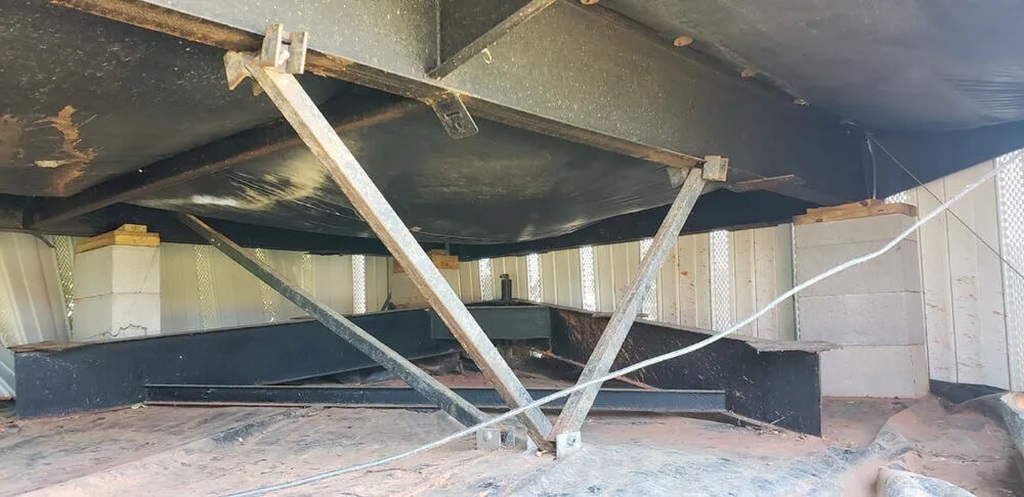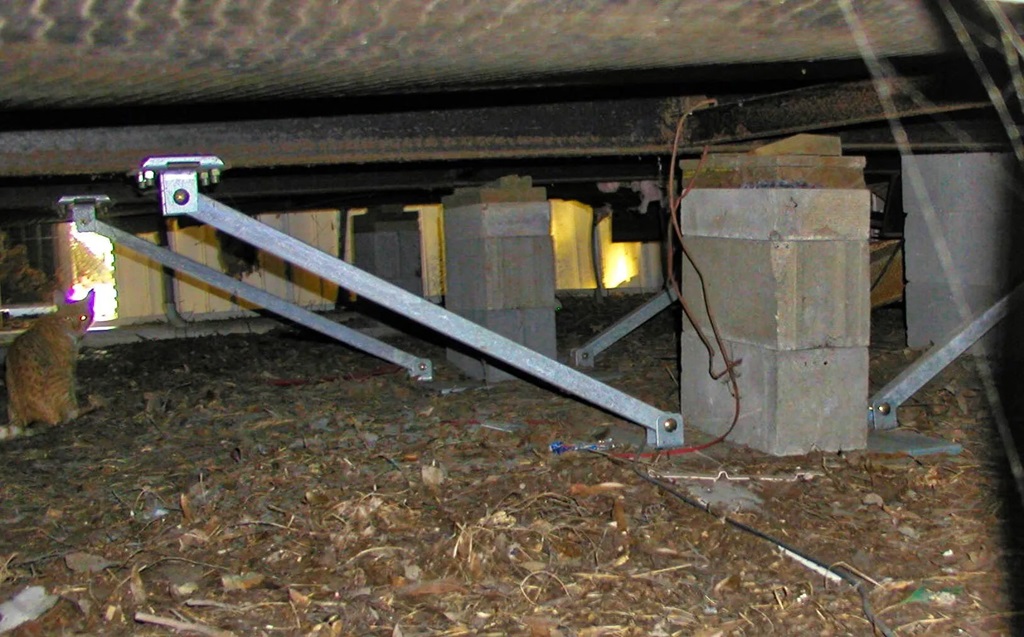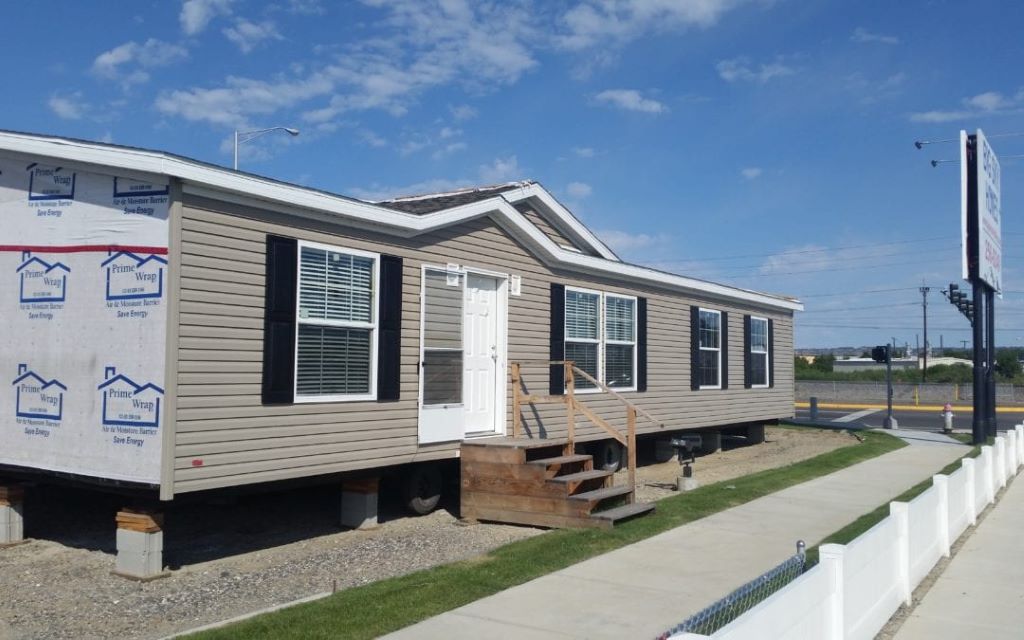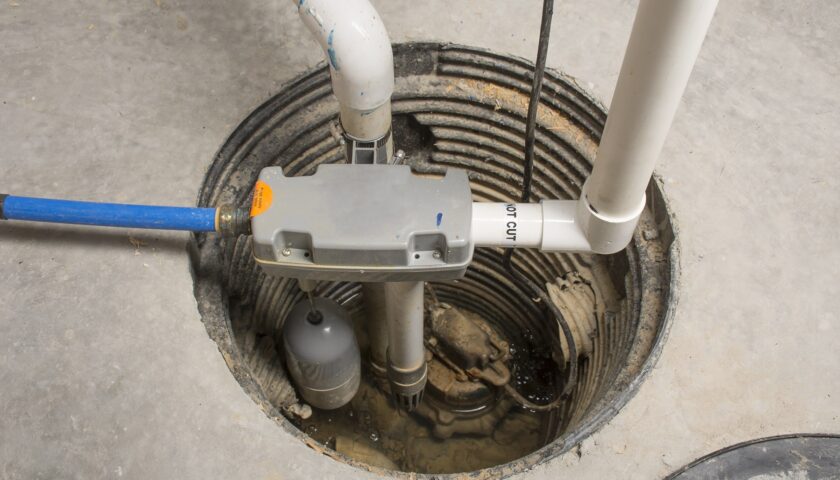Living the mobile home life comes with a unique set of challenges. One of those is protecting your home from fierce winds and storms. After all, manufactured houses tend to be lighter than site-built homes. Thankfully, specially designed tie down systems can securely anchor your place to the ground below. Let’s explore the ins and outs of these important safety features.
What Are Mobile Home Tie Downs?
Simply put – mobile home tie downs are straps and anchors that join your house to its foundation. Their job is to prevent the structure from shifting, swaying, or being lifted when heavy winds blow. Most areas require manufactured houses to have tie downs rated to withstand minimum wind speeds. They’re essential for protecting homes in storm-prone regions.

How Do They Work?
Tie downs form a “closed loop” that resists upward forces. Sturdy straps attach at one end to anchors driven into the ground. The other end connects to steel stabilizing rods alongside the home. When gusts attempt to lift the building, the straps catch and distribute pressure across the anchoring system. This prevents your house from being shoved off its footings or flipped upside down.
What Are The Different Types?
There are two main mobile home tie down configurations:
Over-The-Top Systems
These tie downs get their name because they’re installed above your roof and outside walls. Contractors bolt galvanized eye-bolts into the side frame between trusses. Straps then run at an angle over the structure and tie into ground anchors.
Over-the-top systems work well for securing older units. However, they can only handle lighter wind loads before components start to bend. That’s why they’re no longer used in new manufactured houses.
Frame Tie Downs
Modern building codes demand permanent foundations and closed-loop frame tie downs. These attach directly to thick vertical steel I-beams (sidewall frames) welded underneath newer units. Long straps then angle into the soil using robust anchors.
Frame tie down points are exceptionally sturdy. They form an unbroken load path that resists incredible uplift forces. Installed correctly, some systems meet hurricane wind speed standards. That’s peace of mind in storm-prone regions.
What Do You Need For a Complete Tie Down System?
A functioning tie down setup contains four vital pieces working in sync:
Straps
Heavy-duty steel cables or galvanized belts connect your home to anchors below. They’re made from rugged, weather-resistant materials that won’t stretch or deteriorate over time. Straps come in set lengths, with longer runs needed for wider buildings.
Anchors
These extremely strong receptacles dig into the ground and provide attachment points. Different soils and foundations call for different anchors. However, they all offer tremendous grip and pulling resistance below grade.
Auger anchors – Spiral deep into dirt using rotational force J-hook anchors – Hammer into slab foundations Drive anchors – Pound into place using sledge hammer.
Hardware
This includes tensioners, buckles, turnbuckles, and clips. Hardware joins straps to anchors and allows proper adjustments. Proper setups have backup connections too.
Frame Members
For maximum security, tie downs should bolt directly to thick vertical steel I-beams under new homes. These unbroken structural members offer incredible strength against upward forces.
Do All Areas Require Tie Downs?
Most regions demand tie downs capable of withstanding a minimum wind speed. However, specific parameters differ across local zones. Some high-risk hurricane regions require much beefier systems than inland counties.
It’s essential to check specifications for your area before purchasing equipment. Get informed on:
- Minimum wind speed ratings
- Approved anchor types
- Number of tie down points
- Hardware and strap requirements
Talk to your local building department for definitive codes.
Why Are Mobile Home Tie Downs So Important?
A properly installed tie down system brings immense value to homeowners through:
Increased Safety
Tie downs are arguably the #1 way to secure mobile homes for inclement weather. They greatly reduce the chance of catastrophic building failures. Homes properly strapped down are far less likely to crash, collapse, or catch flight.
Lower Insurance Costs
Insurers reward policyholders who invest in protective measures like tie-downs. Expect to save a chunk off premiums by having an approved system professionally installed.
Peace Of Mind
There’s no replacing the confidence that comes from having a house strapped down tight. Storms seem much less threatening when you know your home stays put in heavy wind.
Hassle-Free Relocation
Properly designed systems make relocating homes a breeze. Just release the anchors and straps, then reinstall at the new site. No need to detach and reset complicated components.
What Does Professional Installation Entail?
Given their critical nature, tie down work should always be handed to licensed pros. The overall process includes:
Inspection
Experts examine foundation type, home construction, anchoring surfaces, and zoning requirements. This data informs parts selection and placement.
Planning
Installers map out strap routing, hardware locations, and underground anchor points. Marks made indicate where to dig and drill.
Site Prep
Crews excavate holes for anchors, clear debris away from the home, and prep attachment zones for drilling/driving.
Anchor Installation
Anchors selection depends on soils and construction below. Types include spiraled augers, slab-mounted J-hooks, and drive pin designs. Workers ensure each sits at proper depth and alignment.
Strap Mounting
Heavy straps mount to sidewall framing members or over-the-top eye hooks. Crews test attachments by applying load in various directions.
Tensioning & Finishing
Ratchet tensioners tighten straps until taut, then backup hardware gets secured. Workers check for proper anchor depth too. Once snug, they fill holes and finish exterior penetrations.
Inspections & Certification
Many areas require approved inspections before signing off. This proves regs were followed. Once passed, updated permits certify the legal install.

Caring For Your Tie Down System
While designed to last, tie downs still need occasional attention. Follow these tips:
Inspect Straps Yearly
It’s important to ensure the safety of your equipment. Take a moment to check for any signs of excessive slack, fraying, or loose hardware. If you do notice any issues, be sure to tighten any loose parts to restore proper tension.
Clear Soil After Big Storms
To ensure the longevity of your straps, it’s important to remove any heavy piles of wet soil that may cause excess slack. By doing so, you can prevent any potential damage and keep your straps in top condition.
Check Anchor Integrity
To ensure the safety of your anchors, it is important to inspect the ground around them after flooding. Erosion can weaken the stability of the anchors, putting your belongings at risk. Refilling any holes or cavities completely can prevent any potential damage and give you peace of mind. Don’t wait until it’s too late, take the necessary steps now to protect your investments.
Add Supports As Needed
As time passes by, it’s natural for homes to settle and components to age. That’s why it’s important to have additional tie down points installed to ensure the safety and stability of your property. Don’t overlook this crucial step in maintaining the structural integrity of your home.
Consider Upgrades After Major Events
If you want to ensure your safety during extreme winds, it might be wise to consider upgrading your straps. While they may currently provide some protection, there’s always the possibility that they may fail under such extreme conditions. So, to give yourself added peace of mind and security, consider making the upgrade.
Adjust Based On Seasonal Changes
Changes in moisture content have a significant impact on soil density and the tension of straps. It’s essential to be mindful of these fluctuations to ensure the safety and optimal performance of the equipment.
FAQs
How much do installed systems usually cost?
Expect to spend $2,000 – $4,000+ for parts and professional installation. Bigger/heavier homes in extreme wind zones pay the most.
Should I install tie downs myself?
While DIY kits exist, hiring a licensed crew is highly recommended. Proper zoning knowledge, anchor selection/placement, and tensioning finesse are crucial.
How long should tie downs last?
Properly maintained systems can remain functional for 20-30 years or more. Check main components yearly and replace deteriorated parts.
Will tie downs alone protect my home in a hurricane?
Tie downs greatly improve chances but total loss remains possible in worst-case storms. For better security, also consider shutters, laminated glass, and plywood weather barriers.
Is homeowner’s insurance cheaper with tie downs?
Most insurers reduce rates for anchored homes. Expect at least 10% off, sometimes more. Call your agent to check discount eligibility.
The Bottom Line
Tie down systems form your last line of defense in extreme weather. High-quality parts properly tensioned by seasoned crews provide the best protection over the long run. Consider them indispensable for securing mobile homes through storms ahead.
While a significant undertaking, removing a tub drain can deliver immense satisfaction to homeowners through an enhanced bathing experience, improved maintenance access, and increased aesthetic appeal to the bathroom space. Much like tie downs offer reassurance in adverse weather, successfully tackling a tub drain removal provides a sense of accomplishment and peace of mind in maintaining a well-functioning home.




